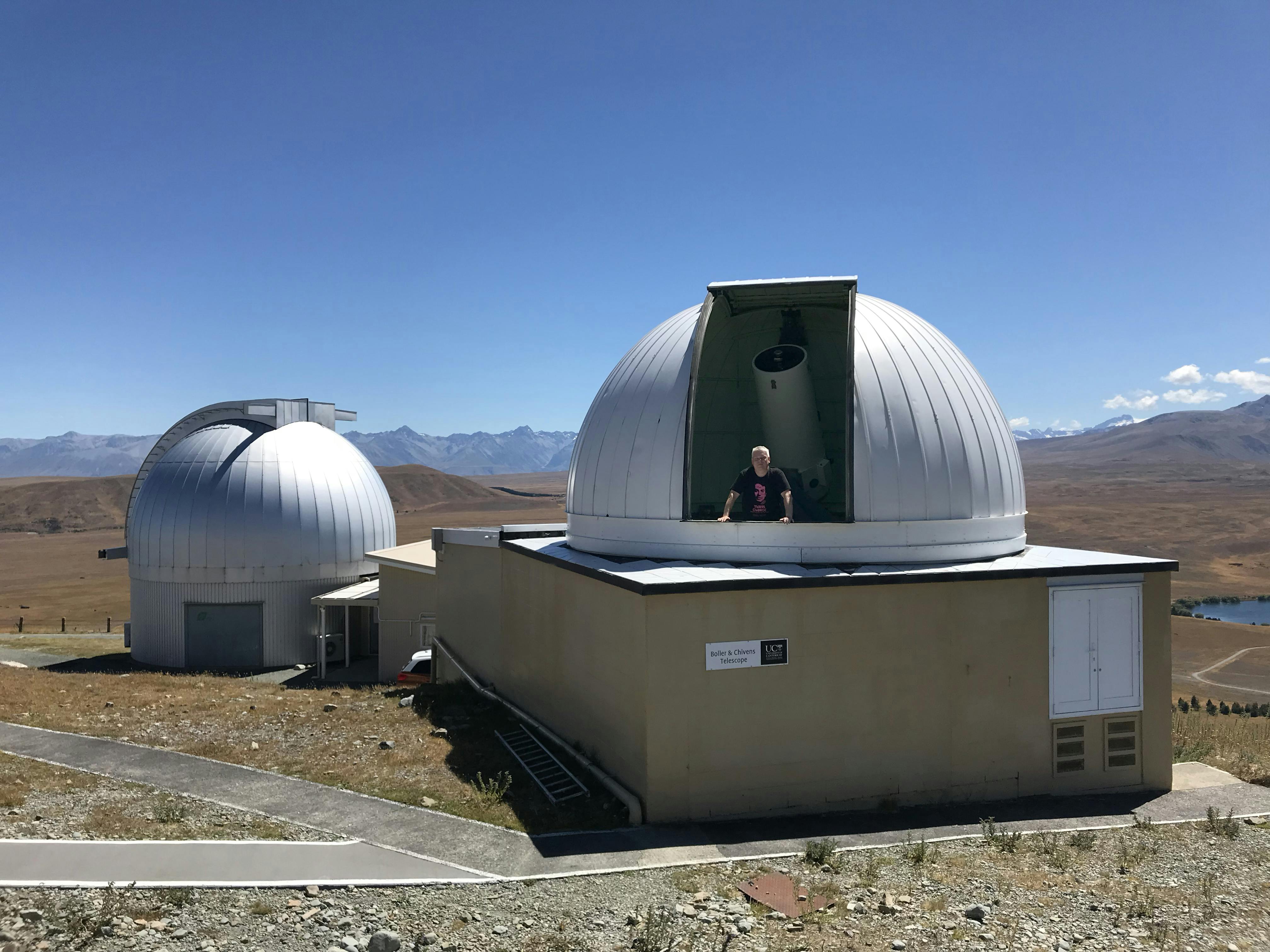Ian Griffin is the director at Otago Museum. He’s also an astronomer spreading his love of the night sky through his photography on Twitter and says trampers are among the lucky few who get to places dark enough where they can still view the cosmos. This year, he’s planning a series of events to celebrate the transit of Mercury across the sun which coincides with the 250th anniversary of James Cook observing the same phenomena.
What’s significant about the transit of Mercury this year?
It occurs exactly 250 years after Captain Cook and his astronomer Charles Green saw a transit of Mercury in Mercury Bay in 1769 when Cook first visited New Zealand.
Why is that worth celebrating?
When I realised this year’s transit is happening on the 250th anniversary, I thought there has to be something we can do around NZ astronomy because back in 1769 Cook and Green didn’t share this excitement with Māori, but the Māori had this amazing astronomical knowledge. So I thought, 250 years ago Māori knew how to navigate across the ocean using the stars and Cook was using telescopes. Let’s share that heritage and observe the transit together.
How do you plan to mark the occasion?
I have lottery grant funding for a roadshow and beginning in July we’ll be running all sorts of events around the country. One of the speakers on our tour is Rangi Matamua who is the expert on Māori astronomy in New Zealand. He’s going to be giving the background to Māori understanding of the heavens. In each location, we’ll be going to marae and trying to get kids from all backgrounds interested in astronomy. On the day of the transit, we’ll have a big morning star party at Whitianga so we’ll be actually observing a transit of Mercury from Mercury Bay.
You’ve got a pretty large Twitter following – are you somewhat of a star of the astrophotography world?
No, definitely not. I’m a dabbler rather than an expert. There are some amazing astrophotographers in NZ and I’m certainly not in their league. I use Twitter as a vehicle to promote astronomy. But no one wants to breach copyright so I have a policy of only using my own photos.
How does it make you feel when you photograph something millions of light years away?
The reason I do it is because when you get into astronomy it does give you a sense of proportion. You might have a terrible day at the office but then you go out and take a photo of the night sky and think blimey that’s millions of light years away and the light has been travelling for hundreds and thousands of years and it really does put your day to day problems into perspective. I think it is a very relaxing hobby to have in that regard.
What are some of the major constellations trampers might see?
The Southern Cross is always distinctive and the Magellanic Clouds – the faint fuzzy patches of light in the southern sky – are always visible. If you’re camping in summer you’ve got Orion in the northern sky and then in the middle of winter, you have the Milky Way directly overhead. If you’re lying in your tent and poke your head out in June or July you’ll see directly overhead the centre of our galaxy.
Why should trampers care about the night sky?
I think there is this human desire to look at the stars and to enjoy them, but because a lot of people live in cities now, they lose contact with the sky and the stars. One of the brilliant things about tramping is the opportunity to visit a dark spot and get in touch with the cosmos again.
What are your tips for observing the transit of Mercury?
The first thing to say is that you’ll be looking at the sun – you can really do your eyes serious damage if you just point your camera at the sun and take a picture. You need to think about getting a solar filter for your camera lens or telescope. Mercury will be a small dot crossing the sun, so you’ll need a decent lens, probably something at least 300mm in length or 600mm. That will give you a nice large image size and you will hopefully be able to see the planet Mercury going across the sun.
– The transit of Mercury will take place on November 12. The transit will be in progress when the sun rises and finish about one hour after sunrise.








